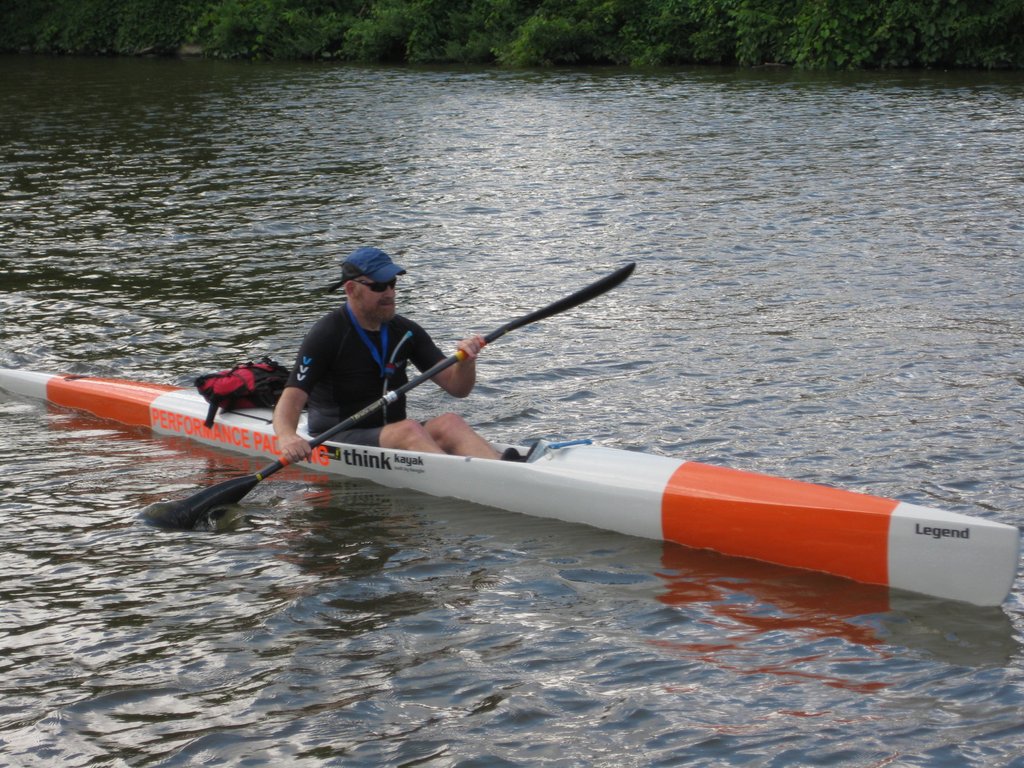[dciframe]http://player.vimeo.com/video/77866932,500,281,0,auto,[/dciframe]
A group of us went for a paddle on the Irondequoit Bay on Saturday. The temperature was around 46°F, and the wind was forecast to get up to 24mph.
The other 4 guys all used regular kayaks because they’re warmer, but I used my stable ski (Epic V10Sport) because I wanted to be sure I could handle any waves or gusts if the wind got as strong as was forecasted.
We started off in the “suck water” at the south end of the bay. The wind was getting up, and there was a bit of a push that was countering the slowing effect of the shallowness. We weren’t pushing it though – at this time of the year, we’re not building for anything, just trying to keep up our shape for next year. We paddled at a nice pace, where we could still talk a bit.
About halfway down the bay, the wind was building strongly, and we were starting to feel a bit of a push. By the time we got to the bridge, the waves had built to the point where Doug’s rudder was getting lifted out of the water when he was on top of the wave. I was glad I was in the ski or I would have been turning out on every wave – Doug is a better boat handler than I am, so he was able to handle it. But also during the bigger waves, especially when we got a boat wake from another direction at the same time, a tiny bit of water would slosh over the side of my ski, which was a downside – I think in a kayak I would have stayed dry.
We turned at the number “8” marker, which is about 5 or 6 km down the bay. At that point it was clear that the wind was as strong as forecast, if not stronger. And it was right in our faces. The waves were now built to the point that most of them were coming over the side of my boat, and I reluctantly had to rip off the tape I’d used to cover the venturi drain, meaning that my heels and the back sides of my calves were constantly in cold water, and if I slowed down paddling, I’d get even more water further up. My feet started to feel cold, although the rest of me was still warm.
We’d decided to hug the west side of the bay on the way up to keep a bit out of the wind. The first part after the turn we were getting weird reflected waves off the breakwalls in front of some of the marinas and condos, but nothing too terrible except for the aforementioned “slosh of water over the side”. When we’d turned it had looked like Rich and Jason hadn’t turned with us, so before the bridge we had pulled into a nice sheltered little side bay to see if we could figure out where they were going. We thought we could see them just disappearing into the big side bay at the top of the bay, just before the outlet into the lake, so it was obvious they wanted a longer paddle than we did. We figured they were two strong paddlers together, so we didn’t have to worry about them, and continued on our way.
Immediately, though, Mike started coming up from my right and pushing me towards the left. He just about ran me into the bridge abutment, and as soon as we passed the abutment I had to stop and let him go through because he wasn’t going to go around me. Doug and I continued up the west side in the semi-shelter, while Mike headed out into almost the exact center of the bay. Doug and I theorized that Mike hates shallow water so much that he’d rather deal with 24 mph winds in his face than water that for 75% of the trip would be completely deep enough, but there was a half km or so of shoals off what I used to call “2 mile point” when I didn’t have a GPS (because it was approximately 2 miles from the Baycreek dock and I used it to judge my progress – you can see references to it in posts like this one).
As we got closer to the place I used to call “One Mile Point”, there was no shelter any more and we were also facing the full brunt of the wind in our faces. That reinforced our view that Mike was nuts to voluntarily paddle the rest of the way up the bay in this madness. My feet were getting almost painfully cold, but the rest of me was still quite comfortable.
After we finished, Ken was arriving to open up the shop so we had a cup of his coffee and stood around talking while my feet thawed out. Doug recommends a combination of socks and plastic bags under the neoprene booties. I’ll have to try that someday. Meanwhile I keep thinking about what a contrast this will be to next week in Tarifa!


